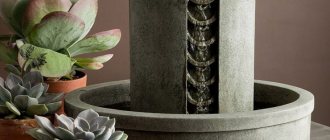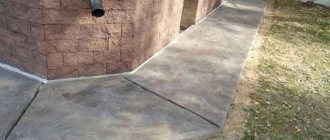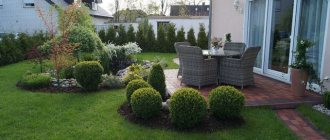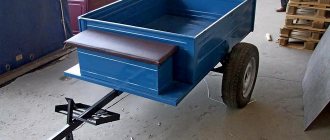Sometimes it is the flowers in the interior that become the “cherry on the cake” or the “highlight” or something else that symbolizes maximum completeness and harmony. We are sure that you yourself have noticed how plants literally enliven the room in which they are placed (pardon the pun). This is their magical property.
Well, if all of the above is not an argument for you, then we will add that the presence of living plants in an apartment or house improves your mood and even increases empathy.
In this article, we decided to focus not on ordinary flowers in pots, but not on vertical home gardening. A phytopan or even a whole phytowall is so beautiful and unusual.
If you decide to take such an adventure, then first of all pay attention to the unpretentious variety of climbing plants (both woody ones, with evergreen or falling leaves, and herbaceous ones, with relatively weak thin perennial or annual stems).
And now to the tips.
Master class on creating a stationary phytomodule
Creating a vertical phytosystem is quite simple. Here it is necessary to follow a strict sequence of actions. The “living” wall structure consists of:
- lightweight design;
- horizontal shelves for arranging plants. They can be made of lightweight plastic or thin plywood;
- water containers;
- irrigation shelf for uniform liquid supply;
- pump;
- timer.
First of all, it is necessary to develop a detailed project. It should include:
- the size of the future structure;
- selection of plants. Here it is recommended to choose unpretentious climbing varieties;
- selection of irrigation system. There are two methods of watering: manual, automatic;
- decorative elements. This is mainly: lighting and natural materials in design.
Video description
The video shows several vertical gardening ideas for your dacha:
Perennials
They are best suited for creating solid green or flowery carpets. Experts recommend giving preference to vines. The round-leaved tree plier takes root well in the Russian climate. It grows very quickly and can rise to a height of up to ten meters. The leaves of this vine are large, hard to the touch, similar to leather. In autumn they change their color to bright yellow.
Round-leaved wood pliers in landscape gardening Source ar.pinterest.com
List of shadow and sun
Placing a module in the interior often requires additional lighting. Ready-made phytostructures come with built-in fluorescent lamps. If they are not available, you should purchase a light source with energy-saving lamps. The chosen location for placing the phytomodule must adapt to the type of plants growing on it.
Light-loving greenery for the interior:
- Kalanchoe,
- Asplenium,
- Spathiphyllum,
- Pelargonium,
- Chlorophytum,
- Begonia,
- Fuchsia,
- syngonium,
- Meyer's asparagus
- Variegated grapes,
- Peperomia creeping,
- Morgan's sedum.
Shade-loving plants:
- Fern,
- Khosta,
- Hoya,
- Soleirolia,
- Clivia,
- Anthurium,
- bromeliad Vriesia,
- Ficus,
- Sheflera,
- Dracaena,
- Cordilina,
- Philodendron,
- Tradescantia,
- Cissus.
Among the landscape universal plants we can highlight:
- Ivy,
- Honeysuckle,
- Maiden grapes,
- Decorative climbing beans.
Living garden in the form of a wreath
Welcome guests to your home with a gorgeous succulent wreath on your door. This type of garden will give a modern look to a green wreath. The variety of colors and shapes of succulents create true originality on your door or wall. Keep your newly assembled wreath out of direct sunlight for a week before you gradually increase the light level to full exposure. Water the wreath every three to ten weeks, depending on how dry it is.
Recipes for Beginners
The simplest type of phytowall is considered to be a “pocket” vertical garden. Today, in any specialized gardening store you can purchase a canvas made of polymer textiles, already equipped with pocket sections for seedlings. The material is durable and perfectly holds the weight of the soil, at the same time it perfectly allows water to pass through, which means that all the necessary conditions for effective crop production are created.
All kinds of herbs (spicy, ornamental), as well as some flowers, look especially good in a “pocket” vertical garden. It will turn out very beautiful if you choose plants of different shades that harmoniously combine with each other.
Where to organize a phytowall?
Any vertical garden wall is visually very attractive. And many, having seen photos of its options on the Internet, get excited about the idea of implementing something similar at their own dacha. However, experts advise that before arranging anything, you should soberly weigh your own strengths, because the installation and care of a particular living structure can be prohibitively difficult.
However, anyone can probably take care of a vertical garden. The main thing is to choose the type of system not only according to your taste, but also according to your own capabilities.
A novice summer gardener will be able to do it, for example, with the option “on the fence” or with mobile containers on a specially equipped wall. In these cases, if for some reason you don’t want to or can’t successfully start a vertical garden, you can abandon it without any problems or big losses.
An experienced plant grower who constantly lives on the site can easily master even larger forms - say, landscaping the entire artificially created vertical wall.
Homemade plant paintings
In addition to paintings from modules, homemade “canvases” are popular, based on a wooden frame, plywood bottom and a metal mesh with a fine mesh as a limiter. The bottom is stuffed onto the frame, a thick polyethylene film is used as a waterproofing material, and perlite is added to the soil for planting. To protect against spillage of the substrate before the root system of the seedlings grows, agrotextiles can be nailed on top of the soil, in front of the mesh, and slits can be made in the cells under the seedlings. If moss (sphagnum) is used as a substrate, only a mesh is sufficient.
Plants are planted according to the chosen plot. If it is just an abstraction, several accents are made due to bright colors or sizes, and the main canvas is filled with a mass of small leaves. In order for the root system to strengthen, the frame must stand horizontally for at least two weeks, after which it can be hung. After hanging, watering as such is reduced to spraying. Thanks to abundant initial watering, perlite accumulates a large amount of moisture and subsequent spraying is sufficient to maintain an optimal balance.
How to do it yourself?
There are several ways to create a homemade vertical flower bed. Let's look at the simplest and most interesting master classes.
From the grid
Before creating a flower bed from a bucket and a net, we recommend that you determine a permanent place for it: the finished heavy structure will be difficult to move.
Which plants to prefer
By and large, any compact plants are suitable for vertical gardening, but preference should be given not only to decorative properties, but also to beneficial properties. For living walls, paintings or shelves in the kitchen - choose greens and herbs, and for other rooms - plants that can purify the air. Florists recommend planting several varieties.
- Ampelous - the best option for containers: for example, hoya, ivy-shaped philodendron, scindapsus, spathiphyllum, chlorophytum.
- Succulents and ground covers - for dry rooms and phyto-pictures (sedum, sedum, young, jasmine, thyme).
- Decorative grapes - for containers and living walls (Amur grapes).
Some even plant special varieties of strawberries, which, with proper care, not only produce excellent green mass, but also bear fruit. Regardless of the varieties chosen, plants in living walls or paintings will require additional lighting, preferably fluorescent lamps. Often the lighting system is made not only functional, but also decorative; it becomes another design element.
Living pictures can be made not only from flowers; decorating the interior with reindeer moss is also in fashion. If there is no craving for living plants, you can play up the finishing with ceramic tiles or decorative plaster. The video shows a landscape designer's garden as an example of the flight of creative thought.
Subscribe to our Telegram channel Exclusive posts every week
Pergolas
Wooden pergolas will help create an unusual flowering corridor. They will look great in any decor style. The structures can be used as canopies, canopies, screens, enclosing an area or decorating walls.
Any climbing plants are suitable for decorating a pergola, but elegant roses or grapes will give them a special charm.











